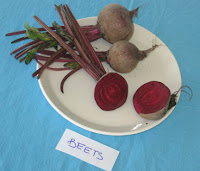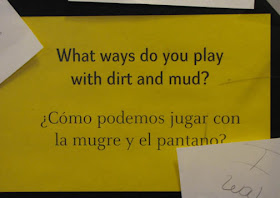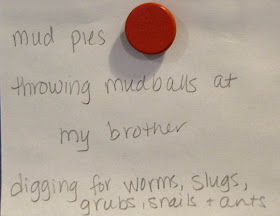 This post was contributed by AmeriCorps Museum Educator Gina Sparacino.
This post was contributed by AmeriCorps Museum Educator Gina Sparacino.
“This looks like a tree. And this is a tree!”
“Hey look—I can write my name with a stick!”
“Can I make another one? ‘Cause this is fun!
“Know what I made? Let me tell you. It’s a dragon!”
These are just a few of the exuberant sound bites heard at last week’s program “Painting with Natural Things.” The activity was the latest installment in the summer
Nature Art series taking place every Friday in July and August from 10:00 AM - Noon.
The series, inspired by our new outdoor exhibits in
The Children’s Garden, was designed by Early Childhood Program Developer Mary Scott Hackman and AmeriCorps member Kerrie Hoban. Together, they revisited some tried-and-true past programs, explored nature activity books, and gained inspiration from the great outdoors to come up with a fun curriculum of creative nature projects.

Week one was devoted to “Painting with Natural Dyes.” Radishes, beets, tea, turmeric, cabbages and blueberries were heated in water in to create beautiful, brilliant hues for children to explore artistically. Kids were instantly drawn to the vibrant colors and surprised to learn how their “paint” had been made. “A lot of kids didn’t know what a beet or a radish was,” shared Kerrie. “It was cool to show them new foods. It made the food more powerful for them to use in the art, which was neat.”
Many visitors saw the activity as both an artistic and scientific endeavor. One child in particular stayed for a large portion of the program, continually altering his canvas by layering food dyes and making observations about the subsequent color changes that occurred. Overall, the event was a hit!

Equally successful was the recent “Printing with Natural Items” program. In week one, the tools (sponge brushes) were synthetic and the medium was natural. For the second week, this idea was turned on its head—children produced artwork using regular black paint (with a healthy helping of dish soap added for easier clean-up!) in combination with “paintbrushes” found in nature.

Visitors experimented with different strokes and texture possibilities using pinecones, feathers, twigs and bark strips. A father took care creating an intricate tree design while his enthusiastic daughter completed four original paintings. A camp group had a ball making all kinds of art—and especially appreciated the chance to get a little messy! Our youngest visitors enjoyed the tactile sensation of the natural items. One three-year-old little girl sat for about 45 minutes using every tool we offered to cover her entire piece of paper with thick, black paint. Her mother commented that she had never seen her daughter sit that long doing one activity. Amazingly, the secret for engaging toddlers and children of all ages doesn’t have to involve a great deal of money or labor—just a short stroll outside and a little imagination!

Be sure to check out future
Nature Art programs each Friday morning through August –
click here for details. And afterwards, maybe you’ll be inspired to try these activities at home!
 Things have gotten pretty messy at the Museum lately, in a most wonderful way. We see kids digging and playing and poking and crawling out in our Children’s Garden. They’ve built and painted with sticks, stones and other natural materials. And a few weeks ago, during a special weekend Dig In! program, they sifted through soil in search of buried treasures, made mud paintings, and cooked up some magnificent mud pies – several of which were so intricately decorated that they hardly look like mud!
Things have gotten pretty messy at the Museum lately, in a most wonderful way. We see kids digging and playing and poking and crawling out in our Children’s Garden. They’ve built and painted with sticks, stones and other natural materials. And a few weeks ago, during a special weekend Dig In! program, they sifted through soil in search of buried treasures, made mud paintings, and cooked up some magnificent mud pies – several of which were so intricately decorated that they hardly look like mud!













 Families can also take home some delightfully messy hands-on fun from the Museum Gift Shop. Our play specialists developed “Play in the Dirt!” kits, full of imaginative ways to dig in the dirt and mess around with mud, plus look for fossil and mineral excavation kits; tools to help you build your own worm or ant farm; and gear that will enhance any bug safari or outdoor exploration. Also check our calendar for more upcoming fun!
Families can also take home some delightfully messy hands-on fun from the Museum Gift Shop. Our play specialists developed “Play in the Dirt!” kits, full of imaginative ways to dig in the dirt and mess around with mud, plus look for fossil and mineral excavation kits; tools to help you build your own worm or ant farm; and gear that will enhance any bug safari or outdoor exploration. Also check our calendar for more upcoming fun!










 This post was contributed by Museum Executive Director Janice O’Donnell.
This post was contributed by Museum Executive Director Janice O’Donnell.











